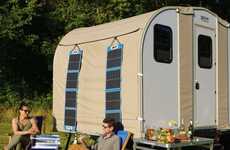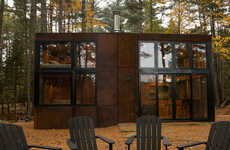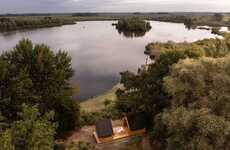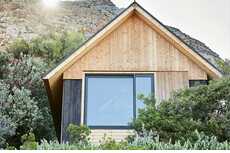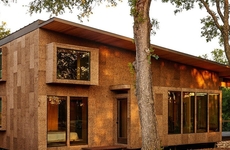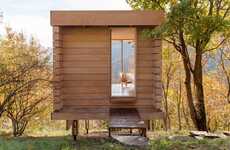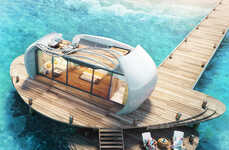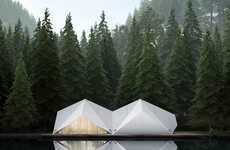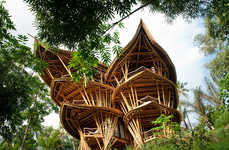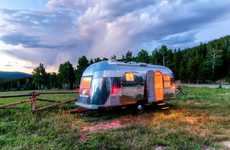
The Modscape Cabin Functions Off The Grid
Rahul Kalvapalle — October 21, 2014 — Art & Design
References: modscape.au & gizmag
The Modscape architectural studio has managed to build an off-grid home in just twelve weeks. The home, located in the town of Tintaldra by the southern bank of the Murray River in Victoria, Australia, is a single-module cabin that was assembled in Melbourne before being brought to its final locatoin.
The home was designed to blend effortlessly into its natural landscape rather than standing out too much and distorting the aesthetics of its surroundings. It is also designed to be extremely low maintenance and highly autonomous to suit the needs of owners who will spend extended periods away.
Modscape designed the home with insulated panels, double-glazed windows and a special facade crafted out of a Zincalume skin and covered in recycled corrugated iron.
The home was designed to blend effortlessly into its natural landscape rather than standing out too much and distorting the aesthetics of its surroundings. It is also designed to be extremely low maintenance and highly autonomous to suit the needs of owners who will spend extended periods away.
Modscape designed the home with insulated panels, double-glazed windows and a special facade crafted out of a Zincalume skin and covered in recycled corrugated iron.
Trend Themes
1. Modular Construction - Disruptive innovation opportunities in modular construction can be explored to create more efficient and sustainable off-grid homes.
2. Sustainable Architecture - The use of insulated panels, double-glazed windows, and recycled materials in home design presents opportunities for disruptive innovation in sustainable architecture.
3. Autonomous Living - Developing highly autonomous homes that require minimal maintenance and can operate off-grid offers disruptive innovation opportunities in the autonomous living industry.
Industry Implications
1. Construction - The construction industry can leverage modular construction techniques to streamline the building process and improve efficiency.
2. Architecture - Architects and designers can embrace sustainable materials and design practices to create environmentally-friendly buildings and homes.
3. Home Automation - The home automation industry can explore innovative technologies to create more autonomous and energy-efficient living spaces.
6.2
Score
Popularity
Activity
Freshness

